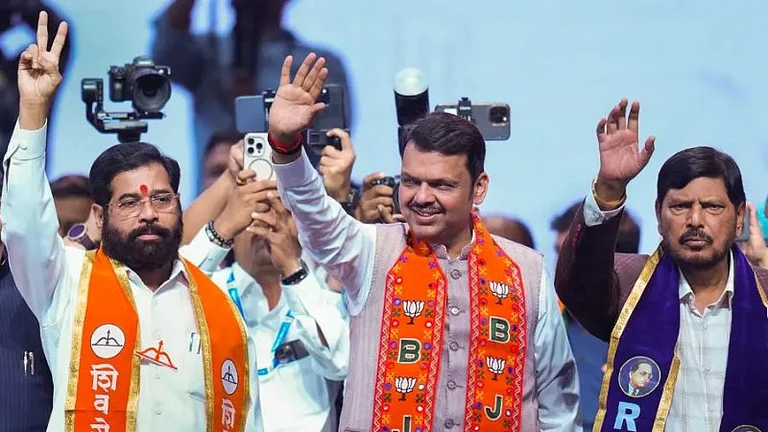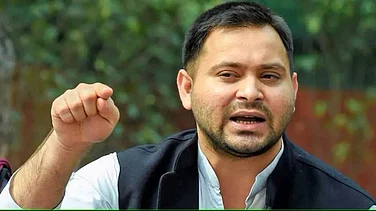Home minister Amit Shah spoke about Bihar’s journey from the “lantern to LED” as he addressed the people of the state at a virtual rally on June 7. The BJP tried to make it look as real as possible by creating a rally-like atmosphere at the party headquarters in Delhi, giving a peek into what post-COVID-19 electioneering is going to be like. And Bihar is going to be the first big election following the outbreak of the pandemic in India. Top government sources say postponement of the Bihar elections is the last thing they would want. The assembly elections, which must be concluded by November 29, are likely to take place as per schedule in October-November and will be the trendsetter for a new kind of electoral democracy.
Though various options of virtual and e-voting are being discussed, they are all in the nascent stage yet. According to sources, the elections will by and large see voting in the traditional manner, though people will have to maintain social distancing norms while queuing up at polling booths. Virtual voting may be tried in a few assembly seats as a test case. Declining to give details of the “baby steps” taken towards digitisation of voting, chief election commissioner Sunil Arora says, “We are working on blockchain solutions to enable remote voting. The Technical Experts Committee (TEC) of the Election Commission of India (ECI) is working to develop a blockchain system that would allow voters to exercise their votes when they are physically away from their constituency.” The TEC comprises experts from IITs across the country.
The ECI is holding an exhaustive meeting on June 15 to discuss the way forward. “CEC Arora has always reiterated that elections will be held on time,” says a senior government official, who has attended previous ECI meetings—all held on video platforms. “The general view is that elections can be delayed only in a force majeure situation, if pushed completely into the corner by the prevalent situation of the pandemic.”
Elections to Lok Sabha or state assemblies can be postponed for six months by the EC. However, in case of an Emergency, the elections can be deferred for one year, plus six months after the Emergency is lifted. Former CEC S.Y. Quraishi says the state of emergency can be declared only if there is a threat to the security and sovereignty of the nation, not if there is an epidemic or a pandemic. “Imposing President’s rule in the state is another option, but its limits have been repeatedly defined by the Supreme Court,” he says.
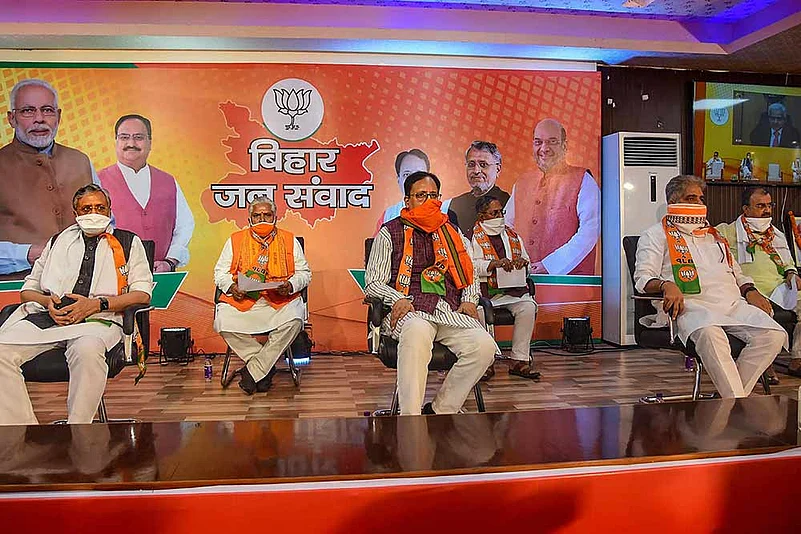
According to Quraishi, holding elections in Bihar may be a daunting task, but not impossible. “After all, South Korea held its parliamentary polls amid the coronavirus pandemic and witnessed the highest ever turnout. The ECI is studying the South Korean model and I am sure India will do better than that,” he adds. Bihar’s population of 9.9 crore is, however, much bigger than South Korea’s 5.16 crore.
The sheer logistics involved in holding elections in Bihar at such a time are intimidating, says an official. In the 2019 Lok Sabha elections, the total number of polling booths in Bihar was 72,227. Each booth ideally caters to 1,200 to 1,500 voters, which can turn out to be a nightmare for social distancing. The ECI is in the process of figuring out the ideal number of voters per polling booth. “If we allow only 500 voters per booth, we need 70,000 more officials to man the increased number of booths,” says the official. “And if we decide to have 800 voters per booth, we need 51,000 additional officials. We are working on all these issues.” Each booth needs at least six officials to man it—first polling officer, second polling officer, third polling officer, presiding officer, micro observer and digital camera person. The role of each is well-defined and cannot be curtailed.
There are no easy solutions. IIT-Bhilai director Prof Rajat Moona, who is part of the ECI’s TEC, says they have been working on the possibility of remote voting for some time. Referring to a 2015 conference where this issue was discussed, he says the electronically transmitted postal ballot system was initiated as an outcome—for people using postal ballot, like those in the armed forces and other services. In this, the ballot paper is transmitted to the voters through an electronic mechanism. The PDF file is then downloaded by them, a print taken and the vote cast. It is then mailed back through the normal postal system. There is no system in place yet to send the ballot back electronically.
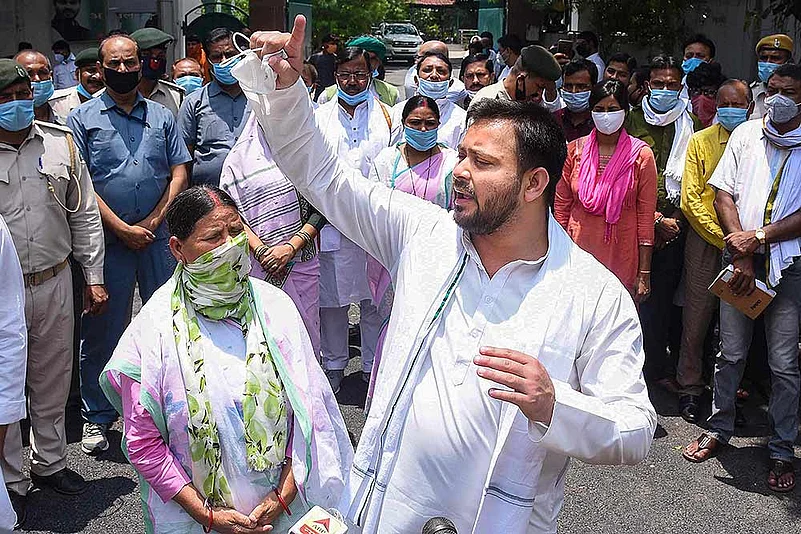
Centre for Digital Economy Policy Research president Dr Jaijit Bhattacharya says holding e-elections with the current infrastructure is extremely challenging. “People need to have their e-signs and it is far-fetched as of now. Penetration of smart devices is still not deep in India. Enormous amount of training and system build-up is needed before we move towards e-elections,” he says. There is also the need to devise a way to maintain the secrecy of the ballot as e-signs or digital signatures could give away the identity of the voter.
Bhattacharya believes a hybrid model of e-election and regular voting could be tried out in the forthcoming elections in Bihar as the ECI is contemplating. Quraishi agrees it can be tried out in a few assemblies, but adds that these should selected by the draw of lots. He adds that it is important to demonstrate that the technology used is hack-proof.
Bhattacharya says technology, when deployed on a large scale, needs to be tested out for both its technical robustness and its social acceptance, especially for sensitive applications like elections. “We should start moving towards e-elections as it would also reduce the cost of conducting polls,” he adds. The 2019Lok Sabha elections had cost the ECI Rs 6,500 crore—Rs 72 per voter.
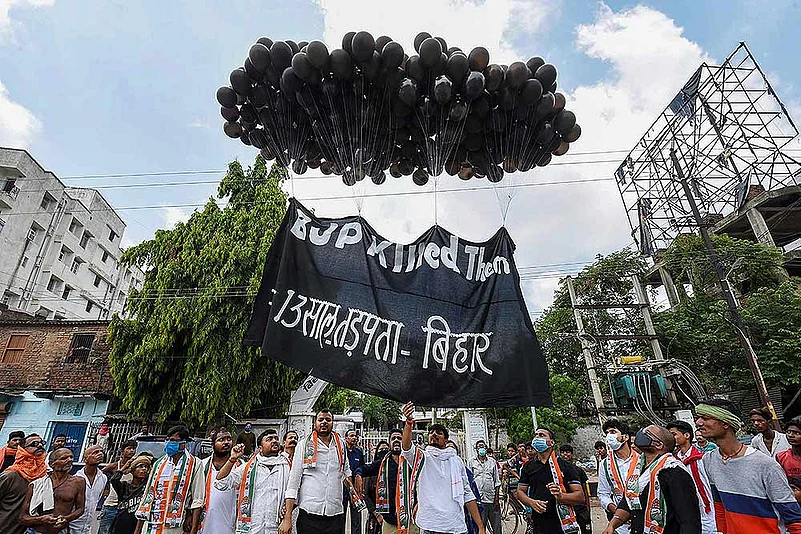
While holding digital elections may reduce the cost manifold, political parties are hoping there will be a major reduction in their campaigning costs in the Bihar polls, and then in the elections in West Bengal, Assam, Tamil Nadu and Kerala, due in the first half of 2021. They anticipate that social distancing norms are here to stay for some elections to come. Political leaders say their campaign strategies will also see a big shift. “Crowded rallies will be a thing of past, replaced by virtual ones. There will be an increased focus on digital canvassing and more personalised micro ground-level contact with the voters. There will also be a return of handbills and pamphlets,” says BJP general secretary Bhupendra Yadav.
The parties are also taking a relook at the issues they generally raise before every election—those of caste and religious identity. They may not work anymore as delivery of welfare measures and livelihood issues are likely to take centre stage in the post-COVID-19 scenario. “The fear of disease has united the people in broader terms. There is also anger among the migrants regarding their struggle to reach their homes, and at the mismanagement by the authorities. There will be a political fallout,” says political analyst Manisha Priyam. Whether LED has replaced the lantern or not, more important in the coming elections would be whether the political parties keep their promises.









